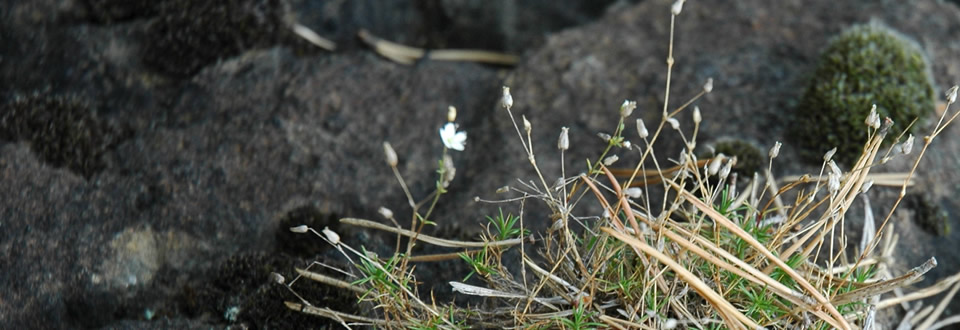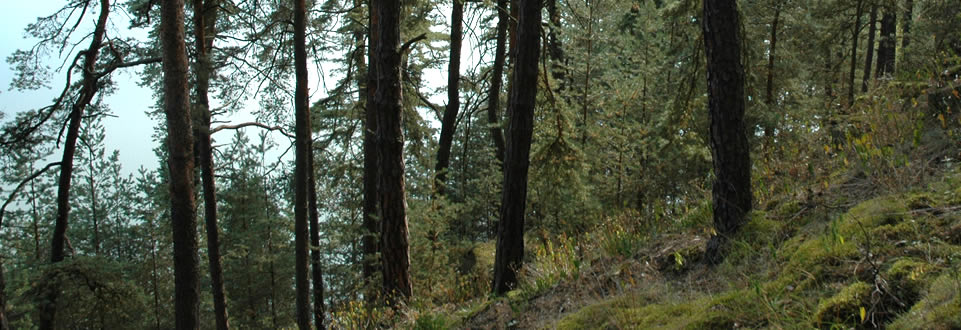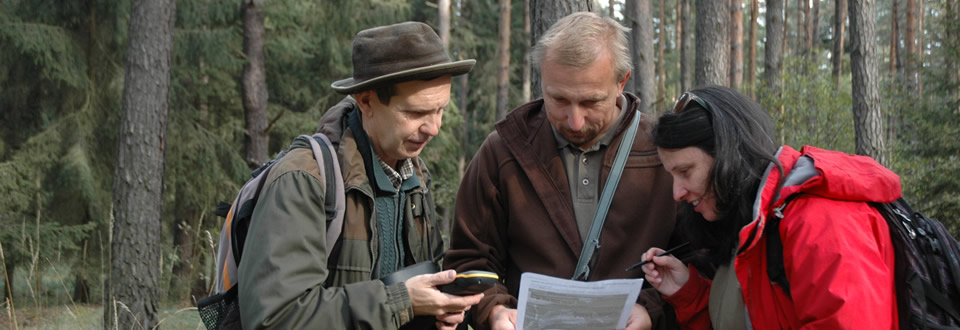Flora and fauna
The locality is completely forested except forest roads and its edges. It consists of a mosaic of younger cultures, made up by spruce or pine, with a small admixture of larch, fir and birch and Douglas fir. In the past, the area was covered by a low-canopy boreocontinental pine forest, most likely grazed. Around 1960, this forest was cut down and replaced by a dense pine plantation. From the botanical view, the most important part is acid pine forest, which occurs on serpentine soil of the union Dicrano-Pinion, in association with Asplenio cuneifolii-Pinetum sylvestris. In the herbal level Vaccinium myrtillus is dominant. Grasses such as Avenella flexuosa, Agrostis capillaris or Festuca ovina is only minor.
In the wet parts, especially near the forest road, Molinia cearuela agg expands. In the dry parts across forest roads the most preserved biotope with high cover of Cladonia sp. (e.g. Cladonia cf. ciliata and Cladonia cf. Rangiferina) and many mosses (e.g. Leucobryum glaucum, Dicranum scoparium, Hypnum cupressiforme, Pleurozium schreberi, Barbilophozia barbata, Scleropodium purum a Plagiomnium affine) occur. On serpentine rocks rarely Asplenium cuneifolium, further Calamagrostis arundinacea, Rumex acetosella or Calluna vulgaris occur.
Parts of the forest with a dominant spruce have very poor or non-developed herbal layer with common acidophilus species.
The wet parts near the forest roads come to union of Genisto germanicae-Quercion, associated with Molinio arundinaceae-Quercetum or Abieti-Quercetum. In herbal layer, Molina caeruela agg. or Deschampsia cespitosa are dominant with occurrence of Dryopteris carthusiana, Lysimachia vulgaris, Potentilla erecta, Epipactis helleborine, Galium palustre and Glyceria fluitans.
The fragments of acid grassland consisting of union Hyperico perforati-Scleranthion perennis occurs near forest road with plants Thymus pulegioides, Agrostis capillaris, Lychnis viscaria, Polygala vulgaris, Luzula campestris agg. and Galium verum. In wet parts, these fragments come to non-determined community with expand of Molinia caeruela agg. and scattered Potentilla erecta and Galium verum.
On the road common wet species such as Persicaria hydropiper, Plantago major, Poa annua, Sagina procumbens, Stellaria alsine, Taraxacum sect. Ruderalia and Cerastium holosteoides occur.
Location has not yet been zoologically explored, because the object of protection is purely botanical issue. The fauna consists of common forests animals such as deer, hare and pigs.








